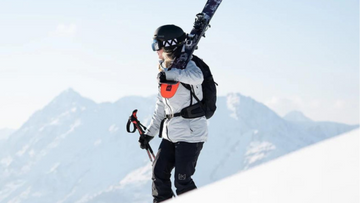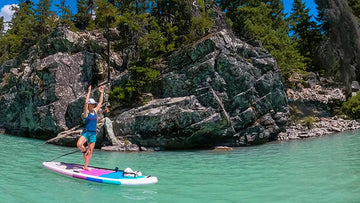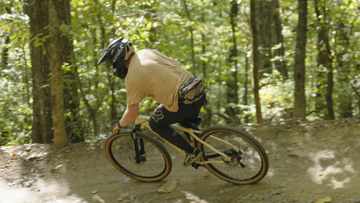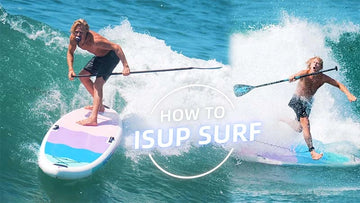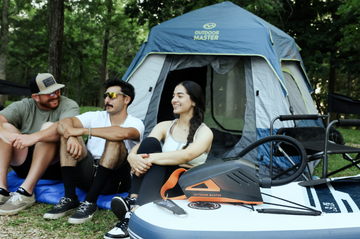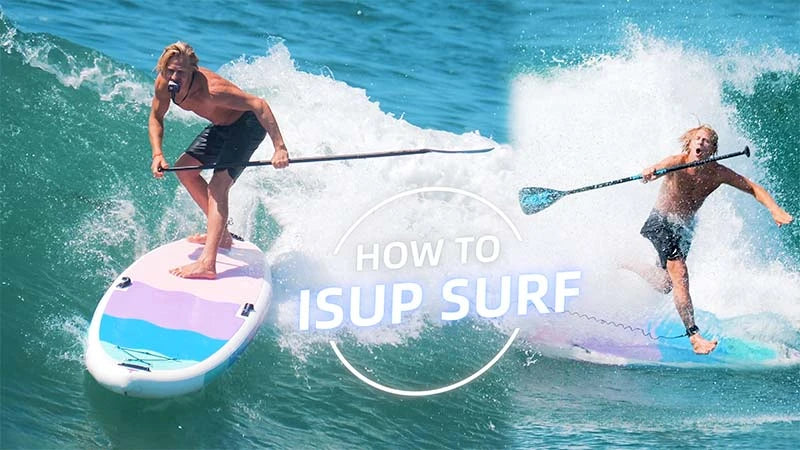
Do you know what’s the best guide to paddle board surfing? Are you a stand-up paddleboarder interested in learning to ride waves using a blow up paddle board? As you may know, Surfing waves on an iSUP is not the same as surfing on a hard board. To surf waves on your paddle board, you will need to learn a few new abilities.
Nearly every single paddle boarder experience this. You are paddling along, expecting a pleasant day full of rainbows and sunshine, when suddenly a wave strikes you!
It throws you off balance, and then BAAAM! You are going into the water!
For sure, you don’t have to worry: if you are familiar with paddling your hardboard on windy and choppy days, you've already got a decent head start on a beginning iSUP surfing!
In this article, I will discuss how to ride different sorts of waves using an paddle board and how to ride it out efficiently.
As an experienced surfer, I frequently assist friends in getting started on their blow up paddleboard on low waves. Therefore, the ten tips below are based on my own experience and my observations of others learning and progressing.
How to Surf on a iSUP: Video Tutorial
Table of content
1.Acquiring the Correct Gear 2.Choose the right Location. 3.Board Pressure 4.Getting Over Waves 5.Foot Position 6.Paddling Straight 7.Riding your iSUP 8.Ride off your Back foot 9.Look at your iSUP Fin 10.Getting back on the iSUP The popularity of iSUP surfing among everyone FAQs1.Acquiring the Correct Gear
Consider how you intend to use it, how it will suit your body, and how you want it to perform in the water when selecting the best stand-up paddle boarding tips for you.
iSUP Hull Types

iSUP hull types
displacement hull vs planning hull
A paddle board's hull, or body, is critical for how the board functions in the water. The majority of inflatable paddle board feature either a displacement hull or a planing hull.
It's a good idea to select the hull type depending on how you intend to operate your board.
A.Planing Hull
A planing hull, like a surfboard, is flat and wide. It is intended to float on the water's surface and be extremely maneuverable. Planing hull boards are ideal for casual paddling, surfing, SUP yoga, and whitewater.
B.Displacement Hull
iSUPs with displacement hulls have a pointed bow or nose (front end) like a kayak or canoe. To boost efficiency and create a quick, smooth ride, the hull slices through the water, forcing water all around the nose to the sides of the paddle board.
Blow up paddleboard with planing hulls and displacement hulls are offered in both construction styles: solid and inflatable.
iSUP Volume and Weight Capacity
An board must accommodate your weight. If the board does not displace the appropriate quantity of water for your weight, you will not be adequately supported, and the board may feel unsteady. Board weight and volume capacity are two characteristics that influence how stable you feel on the board and how smoothly it travels through the water.
Length
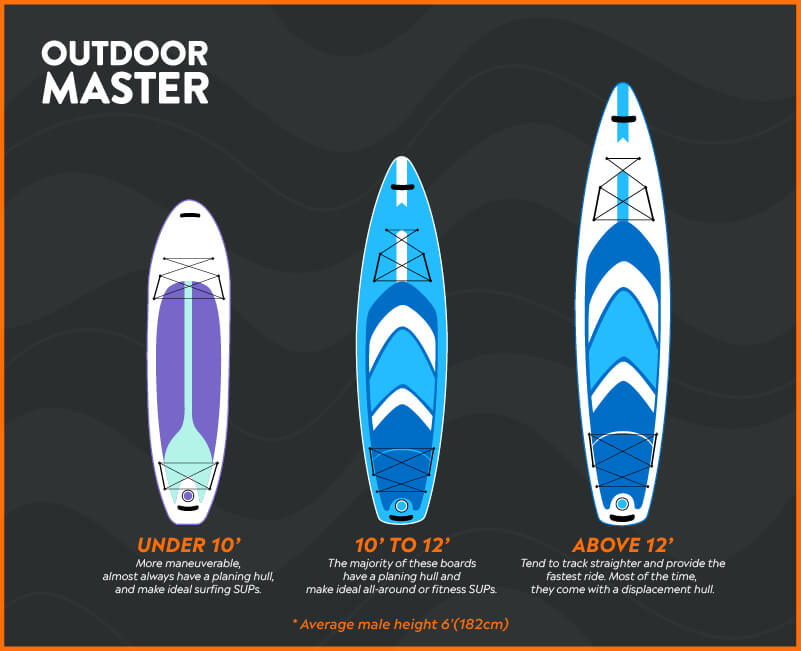
The length of your board has a significant impact on how it performs. Longer boards are often faster than shorter boards, although shorter boards are more maneuverable. When choosing the length of your SUP, keep your intended purpose in mind.
Width
Another crucial component that influences how the board behaves is its width. A wider board is always more stable than a narrow one, but consider that a wide one can also be slower and difficult to paddle if it is too wide for you. iSUPs are manufactured in widths ranging from around 25 inches to 36 inches to meet a variety of applications.
Thickness
The key reason to evaluate a stand-up paddle board's thickness is how it influences the total weight and volume capacity. If two boards of the same width and length but different thicknesses are compared, the thicker board will be of greater volume than the thinner one, and the bigger the volume, the more weight it can sustain.
Fins

Fins improve the tracking and stability of a paddle board. Bigger fins with wider bases and lengthier front edges will often track straighter and offer more stability than smaller fins. A smaller fin, in contrast, hand, improves maneuverability. Most fins are detachable, allowing you to swap the fins and remove them for storage. If your blow up paddle board have more than one fin, I would highly suggest that you take off fins on sides and keep only the middle fin for better balance.
2. Choose the right Location

Aside from gear, the most critical component in learning to ride an iSUP is choosing the perfect location. Here are some crucial characteristics to look for in an excellent beginner surf SUP location:
Small, gentle waves
Look for smaller waves and mild whitewater, with no monstrous waves bursting across the horizon.
A path for paddling out
You need a location with breaking waves in one area and a somewhat flat-water channel on the other side so you can conveniently paddle back toward the lineup on your paddle board.
The water's surface should be smooth.
You want a beach with minimal to no chop, which usually means no wind or a little side/offshore breeze. So, when the water surface between the waves is smooth, learning to SUP surf is much easier!
There should be no rocks for iSUP surfing.
Look for a location with sandy bottoms or enough water depth if there are rocks. You will fall a lot when learning to SUP surf. You don't want to run into shallow rocks or break your SUP when this happens.
Beach break
A beach entry point is preferable to a point break where you have to jump off the cliffs with your SUP. Also, try to choose a beach break without a powerful shore break - pulling your big paddleboard across those waves can be difficult.
Surfing crowds
Choose a location with few surfers to learn to SUP surf. While learning, you'll frequently have to let go of your SUP board amid the waves, with the risk of colliding with someone.
3.Board Pressure

Your Board pressure is one of the most crucial factors to consider before riding your board into water. If you can get your board up to higher or the recommended pressure as possible, go for it. Now we have used the word recommended pressure because we do not want to go over the recommended pressure.
For instance, the red paddle board surfing is recommended 25, so you should go for 25, especially if you are a heavy rider.And the recommended PSI for Outdoor Master inflatable stand-up paddle board is 13, you should go for the recommended PSI.
It will make your board stiffer and give you quicker reaction time, resulting in more stability and feeling more locked under your feet. That pressure is the same with almost all of the inflatable boards on the market.
You can check out this link for further details about your board pressure: https://www.youtube.com/watch?v=Ya1u156H7m0
4.Getting Over Waves

When your board is on the water and you start paddling out for the waves, it is crucial to learn to paddle in the surf stance position when you are paddling over the waves. So, move your feet across from the normal parallel stance to the switch surf stance.
This is because you can put your body weight forward and backward to get the nose of the board over the whitewater.
You have probably seen in some surfing tutorials that you can spread your legs apart, put your foot at the back of the pad, lean on your back leg and you force the nose up over the whitewater and climb the whitewater. That will enable you to paddle on the other side of the whitewater. Therefore, you have to get the nose over the whitewater to make it a lot easier to paddle out.
5.Foot Position

When you are out back in a surfing position, you must determine which foot moves to the back of the board. If you're unsure, stand with both feet together and allow yourself to fall backward. In the surf, your back foot is used to steady yourself. This posture is referred to as "normal" if the right foot is used and "goofy" if the left foot is used.
Doing this allows you to make micro-adjustments when the board is even on the flat paddling out and in slightly choppy conditions. Resulting in a more stable iSUP experience.
6.Paddling Straight

It is essential to point straight towards the beach when you are paddling. In other words, directly 90 degrees from where the waves are coming from.
The reason is that you want the board to track straight and pick up the wave, just glide in the wave, and then start to ride your wave.
You don’t want to be catching the wave at around a 45-degree angle. To explain, if you paddle straight or at 90 degrees to the beach, the fins will work well, the wave will push you in, and you will not face that bug of a rail. It will make catching a wave a lot easier.
7.Riding your iSUP

This might sound strange, but you need to ride your board smoothly. If you are just starting and have not been in surfing before, this will not be an issue for you.
For instance, if you take an iSUP and slam the bottom turn in, aggressively redirect it up to the face like a hardboard, what will happen is that when water moves past the board, it will rail on the bottom line and will need to find space to spilled up off the board.
The iSUPs do not have as much rail shape as a hardboard, so water can get confused, and the board will become unstable. So, you just need to be calm and smooth your turn.
8.Ride off your Back foot

You have to take charge of the iSUP by using your back foot to drive the board on the wave. It is because most of your blow up paddleboard controlling features are at the tail of the board. So, if you press the weight by your back foot on the tail of the board, it will track better, ride better, and make you in charge of your board.
9.Look at your iSUP Fin

We have already discussed the fin above but let me explain a bit more. Inflatable paddle board comes with different sorts of fins.
You just need to put on a stiffer fin because the stiffer the fin is, the livelier the iSUP will feel and will be easier to turn. It does not need to be very expensive, just a bit stiffer, and that will make a prominent difference to the performance of your paddle board.
10.Getting back on the iSUP

If you have fallen from your board, the easiest way to get back on is to find your leash with your hand by your ankle. Pull the board back toward your body and make sure it is upright. If you need to flip it over, do so.
Now find the tail of the paddle boarding tips because you can pivot from the tail to make sure the nose is facing out towards the ocean. Place the paddle on top of the iSUP and find both handles of the rails.
Put pressure on the tail with your stomach while grabbing the rails and slide yourself back up on the board. Now it will be easy to get back on your feet and begin paddling again.
Getting familiar with riding waves using an iSUP will require lots of practice. Don't be discouraged; instead, enjoy the waves!
Some tips have been taken from the link mentioned below, so you should check it out: https://www.youtube.com/watch?v=h3iwB_OPA_g
The popularity of iSUP surfing among everyone
Stand-up paddling emerged in Hawaii in the 1950s and 1960s, when surfing instructors and beach boys used this technique of paddleboard surfing to photograph other surfers.
Well, in the year 2000, Rick Thomas, a Hawaiian native and Navy Special Forces Vietnam veteran, introduced it to the rest of the country.
After that, it spread like wildfire from there, especially with great surfers like Dave Kalama and Laird Hamilton promoting the game.
Let's fast forward to 2022. Today, stand-up paddle boards may be found on every form of water, from ocean surf to rivers to lakes, and are loved by a wide range of individuals all over the world.
One of the most important factors for the popularity of iSUP among everyone is its ease of learning. While surfing can require hours and hours of practice, stand-up paddling can be learned in just an hour.
Those who are anxious or unstable can begin on their knees and continue to stand after their balance has enhanced.
In this sport, you do not need to have an ideal athletic body. This sport is suitable for people of all sizes and athletic abilities. The other major factor for iSUP popularity is that Stand-up paddle boarding enables you to spend time on the water whenever you want. You are not required to plan your activities around low and high tides.
FAQs
What is the difference between iSUP surfing and simple surfing?
iSUP surfing differs from traditional surfing in the fact that the surfer stands up and controls the board by paddling with a lengthy canoe-style paddle. So, Surfing involves the participant lying on the board and paddling across the water using their arms.
How can I catch a wave that I want?
You need to learn quick turning to catch the waves. When you are waiting in the ocean and see the wave, you want. Place your weight at the tail of the SUP with the pressure on your back foot. This will allow the nose of the SUP to lift, and then use the paddle to pivot yourself around 180 degrees towards the beech to begin paddling for the wave.
Is Stand Up Paddle Boarding difficult to learn?
Stand Up Paddle Board Surfing (SUPing) is one of the simplest water sports to learn. Let’s move next, the scope of the game and its equipment are broad and diverse. A beginner to iSUP can quickly and simply grasp the basics under the correct water and weather conditions.


